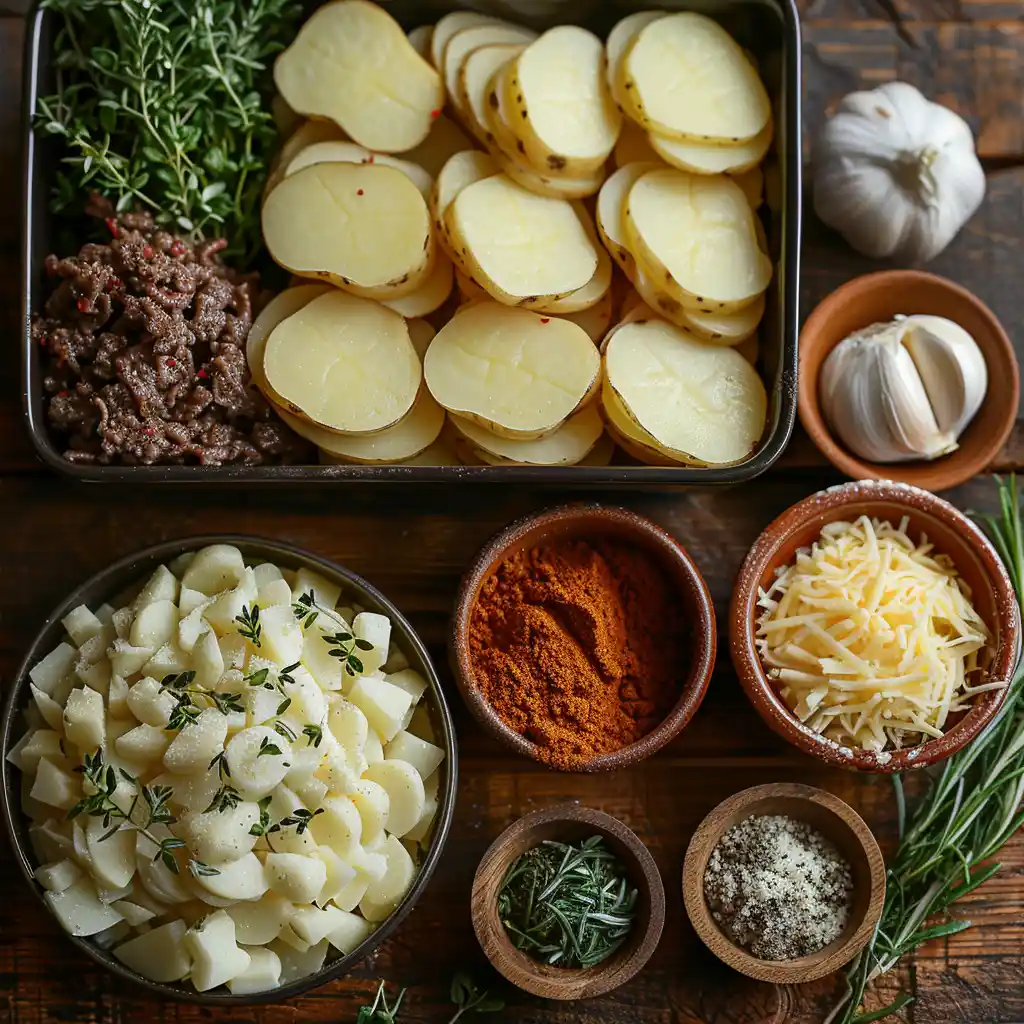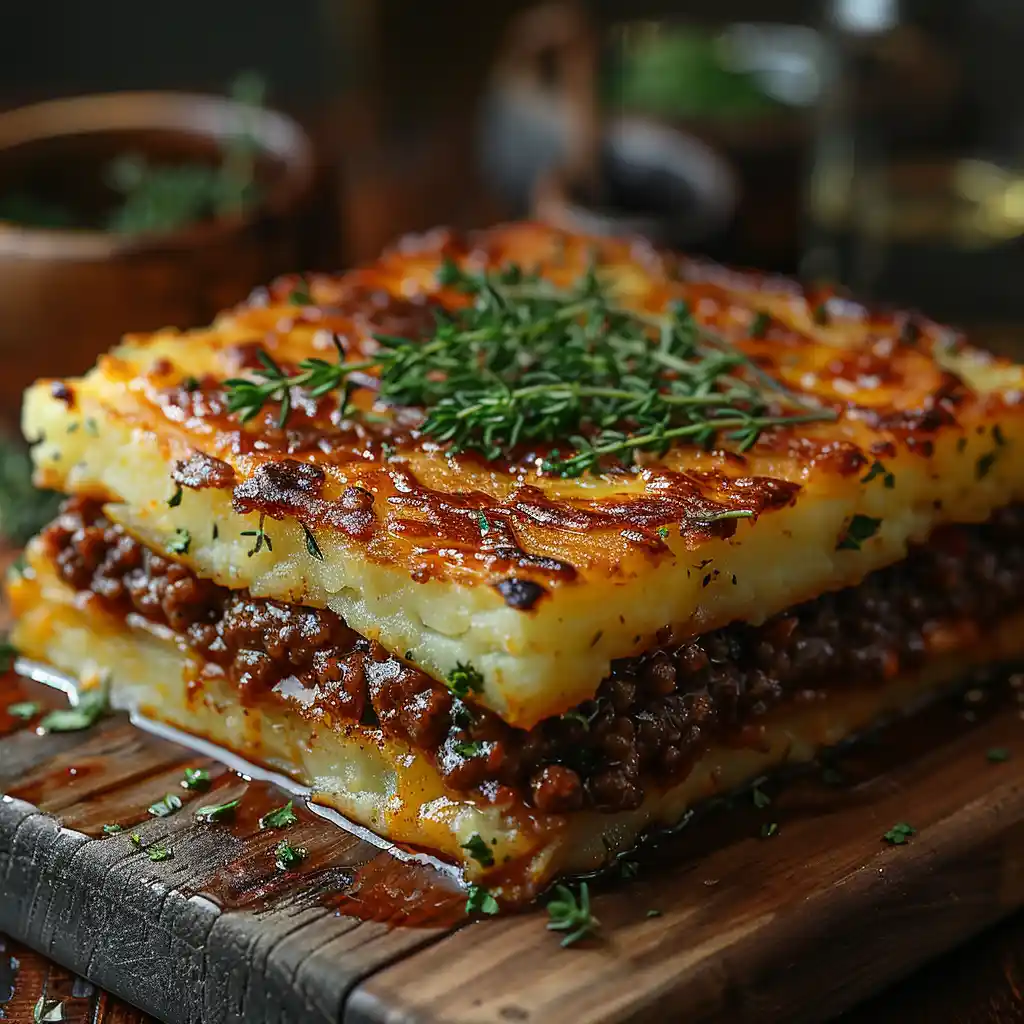Introduction
The term Parmentier might initially seem unfamiliar, but it holds significant meaning in French history, culture, and cuisine. If you’ve ever enjoyed a comforting plate of shepherd’s pie or wondered why potatoes are so closely tied to French gastronomy, you’re about to uncover the fascinating backstory. This article dives into the origins of Parmentier, its culinary associations, and its broader implications in French culture. From its roots in the contributions of Antoine-Augustin Parmentier to its present-day relevance, we’ll explore everything you need to know. By the end, you’ll understand why this simple word carries such weight in French heritage.
The Etymology and Historical Significance of “Parmentier”
The Origins of the Word “Parmentier”
The word Parmentier owes its origins to Antoine-Augustin Parmentier, an 18th-century French agronomist and pharmacist. Parmentier is often celebrated for his pivotal role in promoting the cultivation and consumption of potatoes in France, especially during a time when they were met with skepticism and disdain. The term itself is a tribute to his influence, serving as a cultural nod to his efforts to integrate potatoes into French diets.
During the 18th century, France faced a dire food crisis, leading to widespread hunger. Parmentier championed potatoes as a reliable, nutritious, and cost-effective solution. His advocacy led to significant agricultural reforms and helped potatoes gain acceptance as a staple food. As a result, the name “Parmentier” became synonymous with potatoes and their essential role in French gastronomy.
The Historical Role of Antoine-Augustin Parmentier
Antoine-Augustin Parmentier was much more than just a potato enthusiast—he was a visionary who understood the importance of diversifying food sources. Born in 1737, Parmentier encountered potatoes during his time as a prisoner in Prussia, where they were widely consumed. Upon his return to France, he dedicated himself to dispelling the myths surrounding potatoes, which were then thought to cause disease.
Parmentier’s creative tactics to promote potatoes are legendary. To garner attention, he hosted lavish dinners featuring potato-based dishes for French elites, including King Louis XVI and Queen Marie Antoinette. He even planted potato fields in prominent locations and hired guards to make the crops appear valuable. Once the guards were intentionally removed, curious locals “stole” the potatoes and began growing them themselves—a clever strategy that worked wonders.
Today, Parmentier’s legacy is not only etched into history but also immortalized in French cuisine. The term Parmentier has transcended its initial reference, becoming a symbol of innovation and the essential role of potatoes in addressing food security during turbulent times.
Culinary Context: What is Hachis Parmentier?
Definition of Hachis Parmentier
When it comes to French comfort food, Hachis Parmentier takes center stage. So, what exactly is this dish? Simply put, it’s the French version of shepherd’s pie, consisting of layers of savory minced meat and creamy mashed potatoes. The term “hachis” means “chopped” or “minced,” referring to the finely diced or ground meat used as the base. Adding Parmentier to the name is a nod to the famed Antoine-Augustin Parmentier, highlighting the dish’s reliance on potatoes.
Although comparisons to shepherd’s pie or cottage pie are inevitable, Hachis Parmentier has its own unique flair. Unlike its British counterparts, it is often seasoned with French herbs and spices, making it distinctively French in character. If you’re curious about its preparation, you’ll find out more shortly!
Traditional Ingredients and Preparation

The magic of Hachis Parmentier lies in its simplicity. This dish calls for just a handful of everyday ingredients, yet each component plays a key role in its rich flavor profile. Traditionally, it includes:
- Mashed potatoes: Light and fluffy, often enriched with butter and cream for extra decadence.
- Minced meat: Usually beef or a blend of beef and pork, cooked with onions and garlic.
- Herbs and spices: Thyme, parsley, and nutmeg are popular additions.
- Cheese (optional): Grated Gruyère or Parmesan for a golden crust.
Preparation is straightforward yet satisfying. The meat mixture forms the bottom layer of a baking dish, topped with the creamy potato layer, and sometimes sprinkled with cheese. Once baked to perfection, the top emerges golden and crispy, while the meat remains tender and flavorful. Hachis Parmentier is the epitome of comfort food that feels both rustic and refined.
Popularity of Hachis Parmentier in French Cuisine
Why is Hachis Parmentier so beloved in France? Its versatility is one reason—it can be served as a hearty family dinner, a cozy meal for two, or even a gourmet dish with a modern twist. Restaurants across France often offer their own variations, with upscale takes featuring truffle oil or duck confit.
It’s also deeply rooted in French food culture, celebrated as an economical yet indulgent meal. Home cooks adore it for its ability to transform leftovers into something extraordinary. If you’re eager to learn more about its variations, check out this comprehensive guide on Hachis Parmentier from TastyFables.
Broader Uses of “Parmentier” in French Language
Culinary Terminology Inspired by Parmentier
Beyond Hachis Parmentier, the term “Parmentier” appears in a variety of culinary contexts, all of which pay homage to potatoes. For example, soupe Parmentier is a creamy potato and leek soup, a classic starter in French cuisine. Similarly, dishes labeled “à la Parmentier” typically feature potatoes in some form, such as potato gratin or roasted potatoes as the star ingredient.
Potatoes, once considered unworthy of fine dining, became a culinary icon thanks to Antoine-Augustin Parmentier’s efforts. Today, any mention of “Parmentier” evokes an image of hearty, potato-rich dishes that hold a special place in French kitchens.
Parmentier as a Cultural Reference
Interestingly, the influence of Parmentier extends beyond food. In French culture, it symbolizes resourcefulness and creativity, reflecting how Parmentier turned a mistrusted ingredient into a beloved staple. Literature and art occasionally reference Parmentier to emphasize themes of transformation and innovation.
In daily life, the term is a shorthand for all things potato-related, reminding people of its importance in French history and gastronomy. Whether you’re enjoying a bowl of soupe Parmentier or discussing food history, Parmentier carries a richness that goes far beyond its literal meaning.
Modern-Day Implications and Global Influence
Parmentier Beyond France: International Adaptations
The influence of Parmentier and its potato-rich legacy isn’t confined to France. Globally, dishes inspired by Hachis Parmentier and other potato-centric recipes have gained a foothold. For example, variations of shepherd’s pie in Britain and cottage pie in Ireland echo the layered meat-and-potato structure. In the United States, casseroles take on a similar role, often borrowing techniques from French culinary traditions.
More contemporary adaptations include vegetarian or vegan versions of Hachis Parmentier. These incorporate plant-based proteins like lentils or mushrooms, showcasing the dish’s versatility and appeal to modern diets. The internationalization of Parmentier reflects the timelessness of its concept—a nourishing, layered dish that satisfies across cultures.
If you’re interested in exploring another fusion dish with global roots, check out TastyFables’ guide on green spaghetti. It’s another prime example of how traditional dishes adapt over time and across borders.
The Symbolism of “Parmentier” in Contemporary Food Trends
Today, Parmentier is more than just a name—it symbolizes sustainable, resourceful cooking. As potatoes continue to be a low-cost, widely available ingredient, they are central to conversations about food security and environmental responsibility. Chefs and home cooks alike have embraced Parmentier-style dishes as a way to reduce food waste by creatively using leftovers.
Furthermore, upscale variations of Hachis Parmentier, infused with ingredients like truffle oil or duck confit, demonstrate how this humble dish can transition seamlessly into fine dining. The essence of Parmentier lies in its adaptability—whether you’re cooking on a budget or preparing a gourmet meal, the possibilities are endless.
For more delicious recipes and inspiration, don’t miss TastyFables’ curated list of comforting, potato-based dishes. From stews to casseroles, you’ll find something to love.
FAQs on “Parmentier”
What Does Parmentier Mean in French Cuisine?
In French cuisine, Parmentier refers to any dish that prominently features potatoes, typically in a layered or mashed form. The term pays homage to Antoine-Augustin Parmentier, the agronomist who popularized potatoes in France. Dishes like Hachis Parmentier and soupe Parmentier showcase this culinary tradition.
Who Was Antoine-Augustin Parmentier?
Antoine-Augustin Parmentier was an 18th-century French scientist who championed potatoes as a solution to food shortages. His efforts revolutionized French agriculture and culinary practices, turning potatoes from a despised crop into a beloved staple.
How is Hachis Parmentier Different from Shepherd’s Pie?
While Hachis Parmentier and shepherd’s pie share a similar structure of layered meat and potatoes, Hachis Parmentier is distinctly French. It typically includes specific seasonings, such as nutmeg and thyme, and sometimes a topping of grated cheese, giving it a unique flavor profile.
What Are Some Other “Parmentier” Dishes?
Beyond Hachis Parmentier, the term “Parmentier” applies to dishes like soupe Parmentier (potato and leek soup) and potato gratins. Essentially, any dish where potatoes take center stage can be labeled “à la Parmentier.”
Why is Parmentier Associated with Potatoes?
Parmentier is synonymous with potatoes due to Antoine-Augustin Parmentier’s advocacy for their use during times of food scarcity. His creative campaigns and culinary contributions cemented potatoes as a cornerstone of French cuisine.
This concludes the exploration of the term Parmentier and its rich legacy in French cuisine and culture. If you’d like to continue your culinary journey, why not dive into TastyFables’ Hachis Parmentier guide? You’re bound to find even more inspiration for your next meal.
Nutritional and Cultural Impact of Potatoes in French Cuisine
The Nutritional Importance of Potatoes in Parmentier Dishes
Potatoes, as the core ingredient in Parmentier dishes, offer a wealth of nutritional benefits. Rich in complex carbohydrates, they provide a steady source of energy, making them ideal for both daily meals and special occasions. They are also high in fiber, supporting healthy digestion, and packed with essential nutrients such as vitamin C, potassium, and iron.
The versatility of potatoes means they can be prepared in many ways while retaining their nutritional value. From creamy mashed potatoes in Hachis Parmentier to the velvety base of soupe Parmentier, these dishes show how potatoes contribute to satisfying and nourishing meals.
Interestingly, the advocacy of Antoine-Augustin Parmentier to integrate potatoes into French diets was as much about health as it was about sustenance. His scientific background helped him promote the crop as a solution to malnutrition and hunger, making it an indispensable part of French culinary history.
Cultural Reverence for Potatoes in France
In France, potatoes are more than just a staple food—they’re a symbol of resilience and creativity. The efforts of Parmentier during a time of food scarcity transformed how the French viewed this humble crop. What was once considered unfit for human consumption became a beloved ingredient in both rustic and refined dishes.
Culinary traditions across France reflect this reverence. Whether served as crispy pommes frites, delicate potato galettes, or the ever-popular Hachis Parmentier, potatoes are a testament to the ingenuity of French chefs and home cooks. The association of the word Parmentier with potatoes underscores their cultural significance.
For those who love hearty and satisfying dishes, Parmentier-style recipes remain timeless classics. They not only honor history but also celebrate the enduring appeal of French cuisine. Curious about exploring more dishes rooted in tradition? Check out TastyFables’ Pillsbury chicken pot pie recipe for another comforting, family-friendly option.
Conclusion and Final Thoughts
Why “Parmentier” Matters in French Gastronomy
So, what does Parmentier mean in French? At its core, the term represents much more than a name or a single dish. It embodies the transformation of potatoes from a mistrusted crop to a culinary cornerstone in France. Whether through Hachis Parmentier, soupe Parmentier, or any other potato-focused dish, this word carries layers of historical, cultural, and culinary meaning.
Antoine-Augustin Parmentier’s contributions remind us of the power of food to shape society. His innovative approaches to promoting potatoes not only solved a pressing food crisis but also left an indelible mark on French culture. Today, Parmentier is synonymous with resourcefulness, comfort, and the enduring spirit of French cuisine.
Celebrating the Legacy of Parmentier in Your Kitchen
Whether you’re a food history enthusiast or a home cook looking for your next recipe, Parmentier dishes are an excellent way to explore French culinary traditions. These meals are perfect for gathering family and friends around the table, offering flavors that are both nostalgic and satisfying.
Now that you know the story behind Parmentier, why not try making one of these dishes yourself? For more inspiration, visit TastyFables’ Hachis Parmentier guide or explore their collection of comforting recipes. Dive into the world of Parmentier and discover why this humble word holds such a special place in French hearts—and kitchens!

